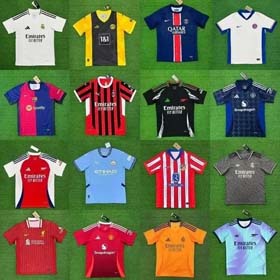Adidas, a name synonymous with athletic excellence, innovation, and cultural relevance, has shaped the world of sports and fashion for over eight decades. From its humble beginnings in a small German town to its current status as a global powerhouse, the brand’s history is a testament to perseverance, creativity, and a deep understanding of consumer needs. This article delves into the brand’s origins, key milestones, cultural impact, and its enduring legacy in today’s interconnected world, with insights inspired by diverse sources, including product-centric platforms like
cnFans Spreadsheet, which highlights the brand’s wide-ranging appeal across markets.
Adidas was founded in 1949 by Adolf “Adi” Dassler in the town of Herzogenaurach, Germany, a place that would later be dubbed “the town of two stripes” due to the rivalry with neighboring brand Puma (founded by Adi’s brother, Rudolf). Emerging from the ashes of World War II, Adi’s vision was to create footwear that enhanced athletes’ performance while prioritizing durability and comfort. His early experiments with rubber soles and innovative designs laid the groundwork for what would become a revolutionary brand.
The brand’s name is a portmanteau of “Adi” (short for Adolf) and “Das” (the first three letters of Dassler), a simple yet memorable moniker that embodies the founder’s personal connection to his craft. The iconic three-stripe logo, introduced in 1952, was initially used to stabilize shoes but quickly became a symbol of the brand’s commitment to excellence. This logo, paired with the later-developed trefoil and mountain-inspired “Performance” logo, would become instantly recognizable worldwide, transcending sports to become a cultural icon.
Adidas’ rise to prominence was fueled by its focus on technological innovation and strategic partnerships with athletes. In 1954, the brand achieved global recognition when the West German national football team wore Adidas’ Telstar boots—featuring a revolutionary screw-in stud design—to win the FIFA World Cup. This victory solidified Adidas’ reputation as a brand synonymous with sporting success.
The 1970s marked a turning point for the brand, as it expanded beyond sports into fashion. The introduction of the Superstar sneaker in 1969, with its iconic shell toe, transitioned from the basketball court to the streets, becoming a staple in hip-hop and streetwear culture. This shift highlighted Adidas’ ability to anticipate evolving consumer tastes, blending functionality with style. By the 1980s, the brand had diversified into apparel, introducing the “三条纹” (three-stripe) design across tracksuits and jackets, a motif that remains central to its aesthetic today.
In the late 20th century, Adidas embraced technological advancements, launching game-changing products like the Air Max line (in collaboration with Nike, though later evolving into unique cushioning technologies like Boost and Lightstrike). The 2005 acquisition of Reebok further expanded its portfolio, positioning Adidas as a major player in the global sportswear market, second only to Nike.
Adidas’ influence extends far beyond athletics, deeply embedding itself in music, fashion, and youth culture. In the 1980s and 1990s, hip-hop artists like Run-D.M.C. and Beastie Boys adopted the brand, turning the Superstar and Shell Toe sneakers into symbols of urban identity. This cultural crossover was intentional: Adidas recognized the power of music and subcultures to drive brand loyalty among younger demographics.
The brand’s collaboration with designers and luxury labels further solidified its status as a fashion innovator. Notable partnerships include Yohji Yamamoto’s
Y-3 line (2003), which merged Japanese minimalism with Adidas’ sportswear DNA, and Kanye West’s
Yeezy collection (2015), a controversial yet commercially successful venture that redefined streetwear’s luxury appeal. These collaborations demonstrated Adidas’ ability to bridge high fashion with accessibility, a strategy that continues to attract diverse consumer bases, as seen in platforms like
cnFans Spreadsheet, which features a range of Adidas-inspired products catering to varied tastes and budgets.
Adidas has also been a vocal advocate for social and environmental causes, aligning with global movements to promote sustainability. The brand’s commitment to using recycled materials, such as Parley Ocean Plastic in its footwear, reflects a growing consumer demand for ethical consumption. Additionally, its partnerships with organizations like UNICEF and its support for athlete activism (e.g., Colin Kaepernick’s “Dream Crazy” campaign) highlight its role as a socially conscious brand, resonating with younger generations who prioritize purpose over profit.
Like all global brands, Adidas has faced challenges, including intense competition, supply chain disruptions, and shifting consumer preferences. The rise of fast fashion and direct-to-consumer models 倒逼 the brand to accelerate its digital transformation. Initiatives like the Adidas Creator Club, a membership program fostering community and exclusivity, and its focus on e-commerce and personalized products (e.g., custom sneakers via miAdidas) reflect its adaptability in the digital age.
The brand’s response to the COVID-19 pandemic, such as pivoting to produce face masks and supporting healthcare workers, underscored its commitment to social responsibility. Meanwhile, its emphasis on inclusivity—through campaigns featuring diverse models and adaptive apparel for people with disabilities—has reinforced its reputation as a brand that celebrates individuality.
Today, Adidas stands as a symbol of innovation, cultural relevance, and global unity. Its journey from a family-run workshop to a multinational corporation highlights the power of staying true to core values while evolving with the times. As seen in platforms like
cnFans Spreadsheet, which showcases a wide array of products inspired by global trends, Adidas continues to cater to a diverse audience, blending heritage with modernity.
Looking ahead, the brand’s focus on sustainability, technological innovation (e.g., blockchain for product authentication), and inclusive storytelling will likely define its next chapter. As Adi Dassler once said, “The best shoe for the best athlete”—a mantra that continues to guide Adidas in its mission to empower individuals through sport, style, and shared values.
In essence, Adidas is more than a brand; it is a cultural institution that has shaped how we move, dress, and connect with the world. Its history is a narrative of passion, resilience, and endless innovation, ensuring that its legacy will endure for generations to come.
Word count: ~800
External link: cnFans Spreadsheet (for illustrative purposes, highlighting product diversity and market reach)



















